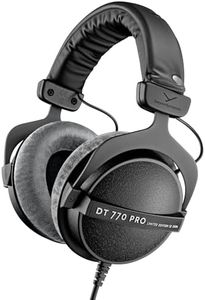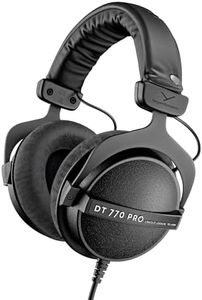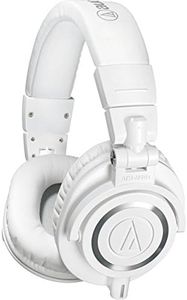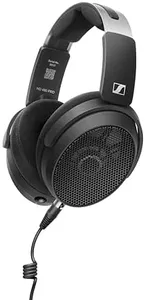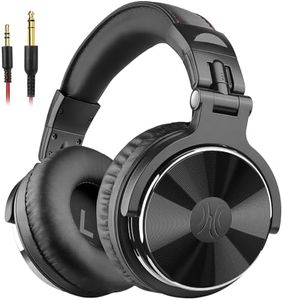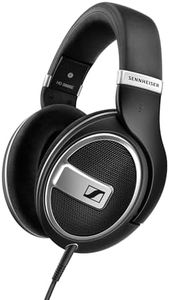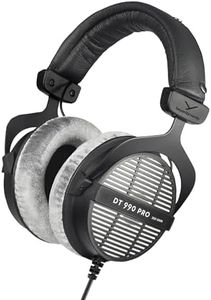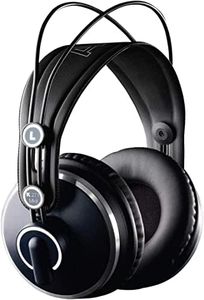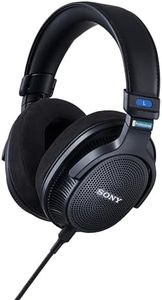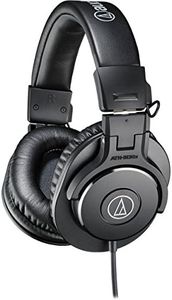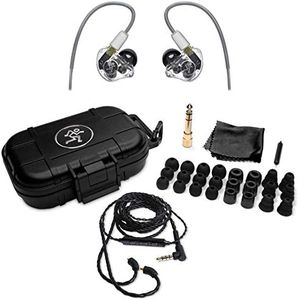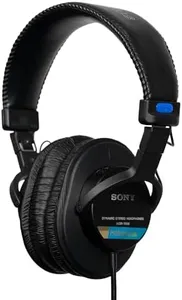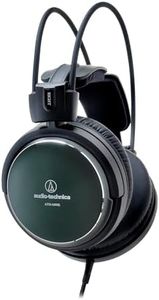We Use CookiesWe use cookies to enhance the security, performance,
functionality and for analytical and promotional activities. By continuing to browse this site you
are agreeing to our privacy policy
10 Best Studio Monitor Headphones
From leading brands and best sellers available on the web.Buying Guide for the Best Studio Monitor Headphones
Choosing the right studio monitor headphones can make a huge difference in how accurately you hear and work with music, podcasts, or any kind of audio. While they might look like regular headphones, studio monitor headphones are designed to give you a clear and uncolored sound, helping you spot details you wouldn’t catch on consumer headphones. The key is to pick a pair that matches how, where, and for what kind of projects you’ll be using them—whether it's mixing, tracking, or casual listening with an appreciation for detail. Here are the main specs you'll want to understand and consider before making your decision.Frequency ResponseFrequency response shows the range of sounds (from the lowest bass to the highest treble) that the headphones can produce. A wider frequency response often means you’ll hear more detail in both low and high tones, which is especially useful for critical listening and mixing. Values are typically given in Hertz (Hz)—for example, 20Hz to 20,000Hz covers the generally audible spectrum. When choosing, if you mainly work with bass-heavy music, look for good extension in the lower frequencies. For vocals or classical music, clarity in the mid and high range might be more important. Remember, a very wide frequency range isn't always better if the headphones aren't accurate within that range, so balance is key.
ImpedanceImpedance, measured in Ohms (Ω), tells you how much power the headphones need to sound their best. Lower impedance headphones (like those around 32 Ohms or below) work well with phones, laptops, or portable recorders. Higher impedance headphones (such as 80 Ohms and up) need more power, typically provided by audio interfaces or dedicated headphone amps, and can deliver more detailed sound in studio settings. If you’ll be listening mainly through basic consumer devices, choose lower impedance. For use in a studio with professional gear, higher impedance can be advantageous.
Driver Size and TypeThe driver is the part inside the headphone that actually creates sound. Larger drivers (measured in millimeters, typically between 30mm and 50mm) can often produce deeper bass and greater volume, but the size isn't everything—quality of the driver design matters too. Dynamic (moving coil) drivers are the most common and provide a good balance of sound quality and durability. Other types, like planar magnetic drivers, can give even greater detail and accuracy but are usually only found in higher-end models. For most users, a well-made dynamic driver in the 40mm–50mm range will offer a great sound experience.
Closed-Back vs. Open-BackThis refers to the design of the headphone ear cups. Closed-back headphones seal your ears, preventing sound from leaking in or out, making them great for recording or use in noisy environments. They offer better isolation but sometimes sound more 'boxed in.' Open-back headphones allow air and sound to pass through, giving a more natural and 'open' sound, which many prefer for mixing and detailed listening; but they let in and leak sound, so they’re best for quiet, private spaces. Choose closed-back for tracking or if you need isolation, and open-back for mixing or extended listening in quiet spaces.
Comfort and Build QualityHeadphones are often worn for long periods, so comfort is crucial. Look for adjustable headbands, soft ear pads (like memory foam or velour), and lightweight designs. Build quality also matters—sturdy materials like metal, reinforced plastics, and quality cables mean your headphones will last. If you’re in the studio for hours or traveling between locations, prioritize comfort and durability to avoid fatigue and frequent replacements.
Neutrality and Sound SignatureStudio monitor headphones are valued for a 'neutral' sound signature, meaning they don’t boost the bass, treble, or any other part of the audio spectrum. This lets you hear your music as it truly is, making it easier to make accurate mixing decisions. Some headphones, though, might subtly color the sound, adding warmth or brightness. Think about your use: if you’re mixing for professional results, stick to headphones with a reputation for neutrality. If you're mainly using them for enjoying music, you might prefer a touch of coloration that pleases your ears.
